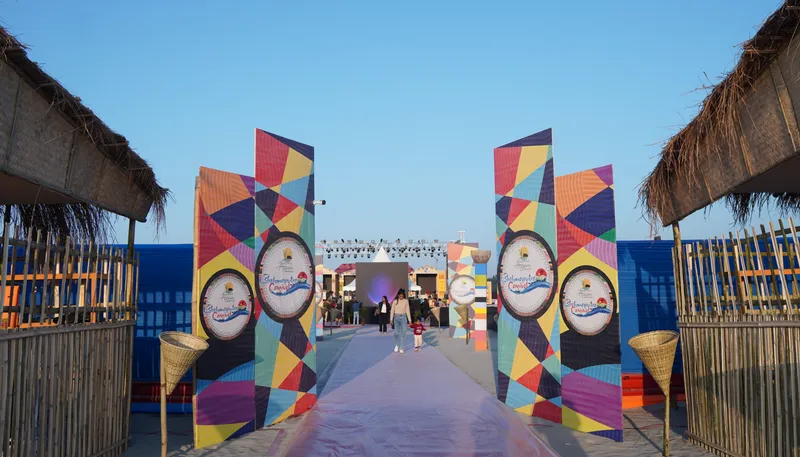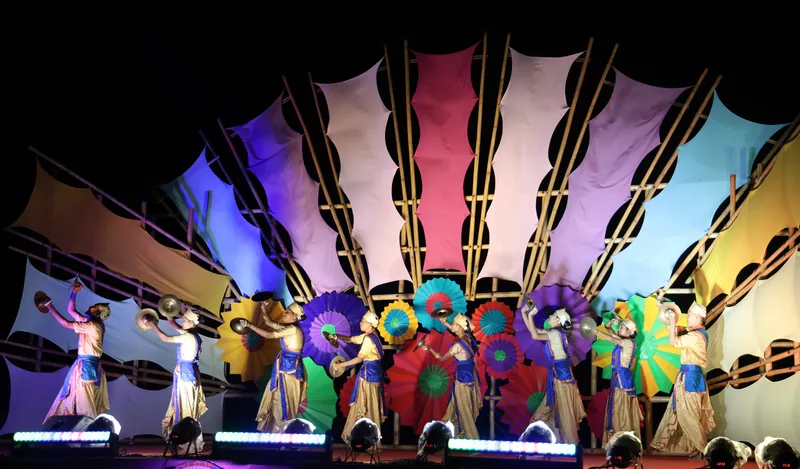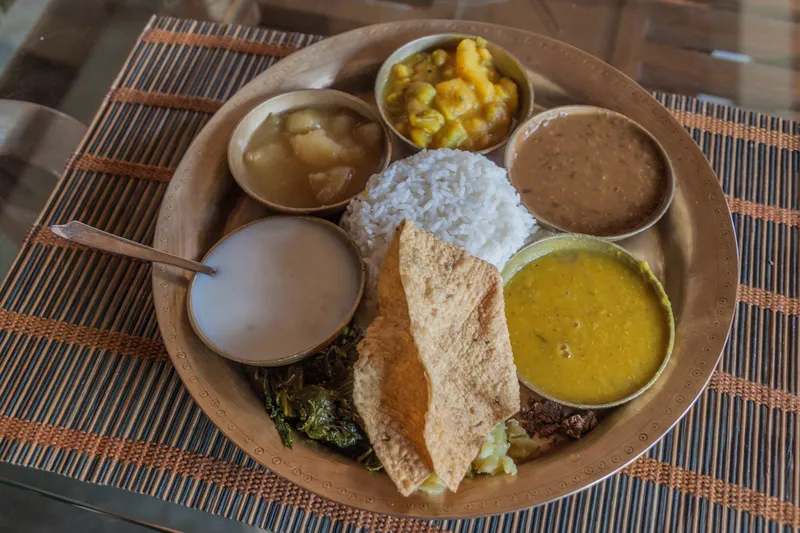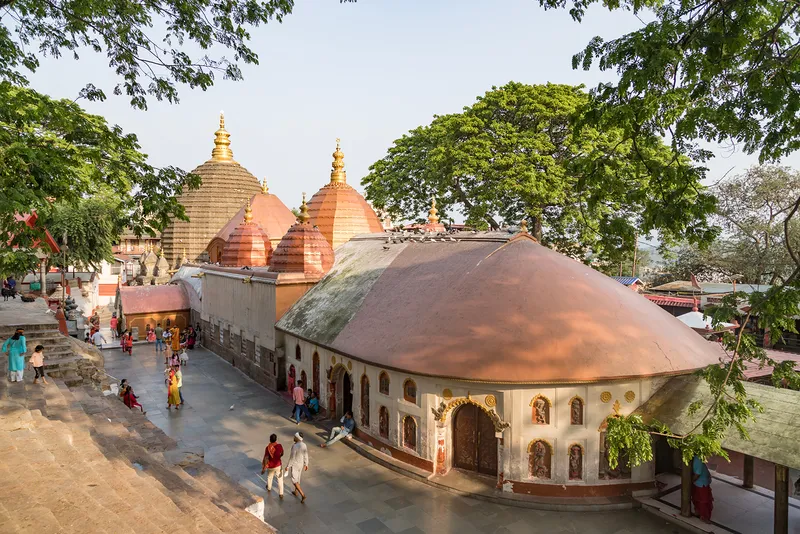Tales of the river: Discover the spirit of Assam through the Brahmaputra Carnival
Experience the essence of Assam’s diversity through the Brahmaputra Carnival, where glamping, adventure sports, cultural performances, and local cuisine come together. Explore the region’s rich traditions and crafts, visit the serene Kamakhya Temple, and savour all that Assam has to offer.
One of the Seven Sister states of Northeast India, along with Arunachal Pradesh, Meghalaya, Manipur, Mizoram, Nagaland, and Tripura, Assam holds a special place in my heart.
Famous for its tea gardens, the one-horned rhinos of Kaziranga, and the majestic Brahmaputra river, the state has always been on my travel list. So, when I got an opportunity to attend the Brahmaputra Carnival, my excitement was palpable—for it wasn’t just about visiting a new destination, it was about stepping into a world rich in culture, history, and natural beauty. And Assam proved to be an experience like no other.
The Brahmaputra Carnival, organised by the Government of Assam, is being held at Lachit Ghat in Guwahati from December 15, 2024, to March 15, 2025. It promises a unique adventure—with luxury camping on the river, glamping under the stars, cultural performances, live concerts, water sports, and more.
During my visit, I immersed myself in adventure activities, traditional dances, local crafts, and regional cuisine, all while being surrounded by the lifeline of Guwahati—the Brahmaputra. It was a great way to explore Assam’s heritage in a vibrant and scenic atmosphere.
As I had just two days in hand, I was determined to make the most of my time, exploring and absorbing as much as I could from the carnival and the nearby attractions.
Luxury in the lap of nature
At the heart of the Brahmaputra Carnival is an extraordinary glamping experience at Tent City. Nestled on the Sandbar Island, right in the middle of the mighty Brahmaputra river, Tent City offers a unique blend of nature and luxury.

Brahmaputra Carnival
The island, which I was told gets submerged during the monsoon, becomes an exclusive retreat during the festival. The luxury tents here are equipped with modern amenities and offer stunning views of the river, bringing guests closer to nature.
Thrill seekers can enjoy exciting activities and watersports, such as kayaking, jet skiing, and speed boating.
As night fell, the Brahmaputra sparkled under the stars, and the sounds of local festivities filled the air, creating the perfect ambience for relaxation and reflection.
At the crack of dawn, waking up to the gentle gurgle of the river was a peaceful and rejuvenating way to begin the day.
Celebrating Assam’s rich dance tradition
While the natural beauty was a feast for the senses, the cultural immersion elevated the overall experience.
The carnival offered an opportunity to witness the unique dances of Assam.

Bhortal Nritya
Bhortal Nritya (Bhortal dance) is a traditional folk dance involving rhythmic footwork, graceful movements, and striking formations created by dancers holding cymbals (percussion instrument).
The dancers’ synchronised steps and the manner in which they carry the cymbals provide a mesmerising visual spectacle, highlighting the region’s deep-rooted tradition of dance.
Apart from Bhortal, the state is home to several other dance forms. Bihu is undoubtedly the most popular and widely celebrated dance form, characterised by energetic movements, rapid footwork, and the rhythm of dhols and other traditional instruments.
The other traditional dances of the state include Bagurumba and Jhumur.
Assam on a plate
Assamese cuisine is distinctive, full of flavour, and known for its use of fresh, local ingredients and traditional cooking methods. The region’s love for fish, rice, and fresh vegetables is evident in many of its dishes.
Mustard oil and bamboo shoots are also key components of Assamese cooking.

Traditional Assamese thali (Image: Shutterstock)
I’m usually not very adventurous with food, but I decided to try some of the regional dishes. The standout was Masor Tenga, a sour and tangy fish curry made with freshwater fish. Flavoured with tomatoes, local lemons, and regional spices, it is typically enjoyed with steamed rice.
Aloo Pitika was another personal favourite. It is the Assamese version of mashed potatoes, enriched with raw onions, mustard oil, and green chillies.
Those with a sweet tooth must try Pitha, a traditional dessert made from rice flour and filled with sesame, jaggery, and coconut. Steamed or fried, the sweet is popular during the Bihu festival, which marks the Assamese New Year.
Did you know that silkworms are considered a delicacy in Assam? Typically deep-fried with spices, they are an integral part of Assamese culinary tradition. I tried some barbequed silkworms along with Assam tea. Crunchy in texture, they have a distinct taste and make for an interesting snack.
Vibrant textiles and handicrafts
Northeastern India, with its diverse tribal cultures, is a hub of vibrant handicrafts and artisan industries, and Assam plays a central role in this cultural tapestry.
The state is widely recognised for its varied craftsmanship, particularly weaving, bamboo products, pottery, and metalwork—and some of them were on display at the carnival.
Assam’s weaving tradition comes to life through its Eri and Muga silks and cotton.
Muga silk is known for its golden hue and natural shine, and is produced only in this region, making it a prized possession of Assam.
Beyond textiles, the state also excels in a wide range of handicrafts.
The abundance of bamboo in the state has led to the creation of numerous handcrafted products such as baskets, furniture, and decorative items.
Kamakhya Temple: A spiritual journey
A visit to Assam is incomplete without a trip to the Kamakhya Temple in Guwahati. This ancient Hindu temple is dedicated to Maa Kamakhya, an incarnation of Goddess Shakti, and is one of the 51 shakti peethas (sacred shrines) in India. According to Hindu mythology, Kamakhya, known as the ‘Bleeding Goddess’, is a symbol of female fertility.

Kamakhya Temple in Guwahati, Assam (Image: Shutterstock)
The Kamakhya Temple is renowned for the worship of the goddess in the form of her yoni (a representation of the female reproductive organ), which is enshrined inside the temple.
Set atop Nilachal Hill, amid lush green surroundings, the temple offers spiritual solace and an opportunity to connect with one’s inner self.
Whether one is visiting the temple for spiritual reasons, cultural exploration, or simply to enjoy the natural beauty, Kamakhya Temple is an unforgettable part of Assam’s rich heritage.
A memorable experience
Assam is truly a wonderful mix of nature, culture, and history, and has something to offer every traveller. My trip to Assam was more than a visit; it was a journey into its soul. I cannot wait to visit the state again to see the majestic one-horned rhinoceros up close and explore more of Assam’s hidden treasures.
Tariffs for the glamping experience at Brahmaputra Carnival:
Deluxe tents: Rs 7,500 per night + taxes
Premium tents: Rs 10,500 per night + taxes
Royal tents: Rs 14,500 per night + taxes
(The author was at the Brahmaputra Carnival on the invitation of the Government of Assam.)
Edited by Swetha Kannan







